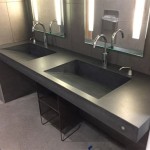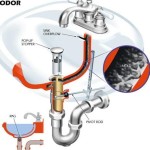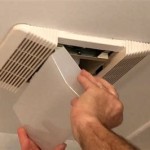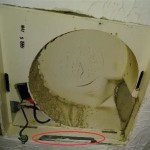How to Remove Mold from Your Bathroom Ceiling
Mold growth in bathrooms is a common problem due to the consistently high humidity levels. The ceiling, often overlooked, can become a prime location for mold to thrive. This article provides a comprehensive guide on identifying, removing, and preventing mold growth on bathroom ceilings, ensuring a healthier and cleaner environment.
Mold is a type of fungus that grows in damp, poorly ventilated areas. It reproduces through tiny spores that float in the air and can settle and grow on surfaces where there is sufficient moisture and organic material. Bathrooms, with their frequent use of water, steam, and inadequate ventilation, provide an ideal breeding ground. Ignoring mold growth can lead to various health issues, including respiratory problems, allergic reactions, and skin irritation. Therefore, addressing mold on bathroom ceilings is crucial for maintaining a healthy living space.
Identifying Mold on Your Bathroom Ceiling
The first step in dealing with mold is accurately identifying it. Mold on bathroom ceilings can manifest in various forms, making early detection essential for effective removal. Understanding the characteristics of mold can help differentiate it from other stains or discolorations.
Mold often appears as small, dark spots that gradually expand over time. The color can vary depending on the type of mold, ranging from black and green to brown and gray. Some mold species may even appear white or orange. In its early stages, mold might resemble dirt or mildew, but it typically has a fuzzy or slimy texture. It is crucial to distinguish mold from simple dirt accumulation, as the treatment methods differ.
Besides visual cues, a musty or earthy odor is a strong indicator of mold presence, even if the growth is not immediately visible. This odor is produced by the volatile organic compounds (VOCs) released by the mold as it decomposes organic matter. If a persistent musty smell is present in the bathroom, even after cleaning, it is advisable to inspect the ceiling and walls carefully for hidden mold growth.
Condensation is a significant contributing factor to mold growth. Regularly observe the bathroom ceiling after showers or baths. Excessive condensation, particularly in corners or areas with poor ventilation, creates a favorable environment for mold spores to germinate and develop. Pay attention to areas where paint is peeling or blistering, as this can be a sign of moisture build-up underneath the surface, which often leads to mold growth.
Safe and Effective Mold Removal Methods
Once mold has been identified, the next step is to remove it safely and effectively. The chosen method will depend on the extent of the mold growth and the type of surface affected. It is imperative to wear appropriate protective gear during the removal process to minimize exposure to mold spores.
Before starting, gather the necessary supplies, including: safety glasses, a face mask or respirator, gloves, a scrub brush or sponge, cleaning solutions (such as vinegar, bleach, or a commercial mold remover), spray bottles, and clean cloths or paper towels. Ensuring adequate ventilation is also critical. Open windows and doors, or use a ventilation fan to circulate air and prevent the build-up of mold spores during cleaning.
For minor mold growth (less than 10 square feet), readily available household solutions can often be effective. White vinegar is a natural and non-toxic option. Pour undiluted white vinegar into a spray bottle and saturate the affected area. Allow the vinegar to sit for at least one hour before scrubbing the mold away with a brush or sponge. Rinse the area with clean water and dry thoroughly.
Bleach is another common household cleaning agent that can kill mold. However, it should be used with caution, as it can be harmful if inhaled or ingested. Always dilute bleach with water (typically a 1:10 ratio of bleach to water). Apply the bleach solution to the moldy area, let it sit for 10-15 minutes, and then scrub the surface. Rinse thoroughly and dry completely. Never mix bleach with ammonia or other cleaning products, as this can create toxic fumes. Bleach can also discolor painted surfaces, so it is important to test the solution in an inconspicuous area first.
Commercial mold removers are specifically formulated to kill mold and prevent its recurrence. These products often contain fungicides and other chemicals that are more effective against stubborn mold growth. Follow the manufacturer's instructions carefully when using commercial mold removers, as some may require specific safety precautions. Always ensure adequate ventilation and wear appropriate protective gear.
When scrubbing mold from the ceiling, be gentle to avoid damaging the paint or drywall. Use a soft brush or sponge to avoid abrasion. After cleaning, thoroughly dry the area to prevent mold from returning. Use a clean cloth or paper towel to absorb excess moisture, and consider using a dehumidifier to further reduce humidity levels in the bathroom.
In cases of extensive mold growth (more than 10 square feet) or if the mold is located in hard-to-reach areas, it is advisable to consult a professional mold remediation service. Professionals have the expertise, equipment, and protective gear to safely and effectively remove mold, especially when dealing with hazardous species or hidden mold growth within walls or ceilings.
Preventing Future Mold Growth
Preventing mold growth is often more effective than treating it. Simple lifestyle changes and preventative measures can significantly reduce the risk of mold recurring on bathroom ceilings.
Adequate ventilation is crucial. Always use the bathroom exhaust fan during and after showers or baths to remove moisture from the air. If the bathroom lacks an exhaust fan, consider installing one. Ensure that the fan is properly sized for the room and that it vents to the outside, not into the attic or crawl space. Leave the fan running for at least 30 minutes after showering to ensure all excess moisture is removed.
Properly sealing and maintaining the bathroom is another essential step. Check for and repair any leaks in the plumbing, around the shower or tub, or in the ceiling. Water leaks provide a constant source of moisture that promotes mold growth. Ensure that grout and sealant around tiles are intact and free from cracks. Re-caulk or re-grout as needed to prevent water from seeping behind the tiles.
Controlling humidity levels is key to preventing mold growth. A dehumidifier can be used to reduce moisture in the air, particularly during humid months. Regularly monitor the humidity level in the bathroom using a hygrometer. Aim to keep the humidity level below 50%. Wipe down surfaces, such as shower walls and ceilings, after each use to remove excess moisture. Store bath mats and towels in a well-ventilated area to allow them to dry thoroughly.
Regular cleaning of the bathroom is a simple but effective preventative measure. Clean the bathroom at least once a week, paying particular attention to areas prone to mold growth, such as the ceiling, corners, and grout lines. Use a mold-killing cleaner or a solution of vinegar and water to clean these areas. Regularly inspect the bathroom for any signs of mold growth and address them promptly.
Consider using mold-resistant paint in the bathroom. These paints contain additives that inhibit mold growth. When repainting the bathroom, choose a mold-resistant paint and apply it according to the manufacturer's instructions. Ensure that the surface is clean and dry before painting. Mold-resistant paint can provide an extra layer of protection against mold growth, especially in areas with high humidity.
Finally, be mindful of the types of materials used in the bathroom. Certain materials, such as organic-based wallpaper or porous tiles, are more susceptible to mold growth than others. Consider replacing these materials with mold-resistant alternatives, such as ceramic tiles or vinyl flooring. Proper material selection can significantly reduce the risk of mold growth in the long term.

Bathroom Ceiling Mold Removal When To Clean Call Branch Environmental

Cleaning Mold From Bathroom Ceilings Like A Pro Lovetoknow

What Is The Best Way To Remove Mold From Bathroom Ceiling

Don T Let Mould Take Over How To Remove It From Your Ceiling

Cleaning Mrs Hinch Fans Share Tips To Remove Ceiling Mould Express Co

Remove Bathroom Mould From Your Ceiling

Ceiling Mold Growth Learn The Cause And How To Prevent It Environix

Easy Way To Clean Mould Off Walls Ceilings Curtain Magic Remover

Mold On Bathroom Ceiling Wipe Out With Diy Remedies

Bathroom Mold How To Identify And Get Rid Of In Environix
Related Posts







